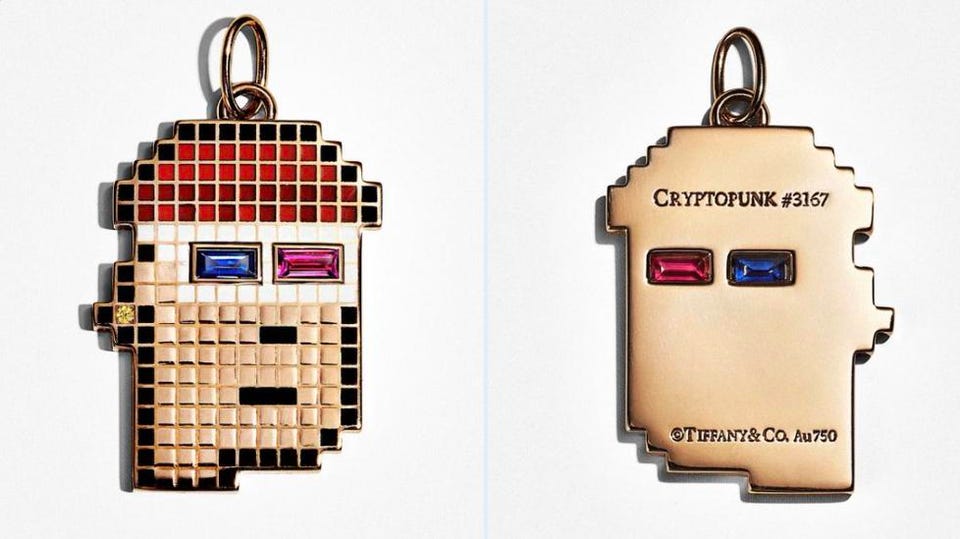The prevalence of the word “phygital” has steadily been on the rise in recent years, with interest growing by more than 57 percent in the past year alone, according to MeetGlimpse. And the trend shows no signs of slowing down.
Consumers in this day and age expect to shop and interact with brands in a way that’s quick and secure. By blending physical items with digital assets for seamless omnichannel interactions, businesses and investment enthusiasts can meet these demands and bring convenience to the modern world.
Phygital isn’t just a buzzword. In a world that is becoming increasingly digital, and as Web3 and the NFT space continue to grow, companies embracing the phygital space are offering near-instant gratification without losing their physical charm.
Let’s dive into the world of the phygital and explore its potential to revolutionize the NFT world.
What does “phygital” even mean?
The word phygital is a portmanteau of the words physical and digital. While the term could describe anything that tries to bridge the gap between the physical and digital worlds, it’s commonly used in businesses to describe a marketing strategy or a retail experience.
It can include using augmented reality, virtual reality, and artificial intelligence to interact with digital assets in the physical world or using digital devices to control physical objects. For instance, when you order an item on your phone (digitally) to pick it up in the store (physically).
In the investment space, phygital NFTs are a type of crypto token that allows for the ownership and trade of unique physical items.
How do phygital NFTs work?
The idea behind phygital NFTs is to create experiences that combine physical items with digital technology. The tokens can represent physical goods — such as collectibles, art pieces, or limited-edition goods — but there’s a twist. These tokens will not only exist in the physical world but also on the blockchain as an immutable record of authenticity and ownership. That means you can own and store your tokens physically and digitally and enjoy the benefits of both realms.
Benefits for artists, creators, and brands
In the NFT space, phygital can create a new level of NFT ownership experience. By linking your physical assets to digital tokens, you can display your ownership on a digital platform or in a VR environment. This creates an engaging and more immersive ownership experience for collectors.
Owners of phygital NFTs can sell their physical assets and still retain the digital tokens’ ownership. This is particularly lucrative for musicians, artists, and other creators who haven’t been able to monetize their assets in the past. Phygital NFTs can increase transparency as well as provide a secure, tamper-proof record of ownership. Since every NFT is recorded on the blockchain, there’s a permanent record of ownership and transaction history. This is important because it increases accountability and trust between traders. It also reduces fraud.
With fractional ownership, you can diversify your portfolio and gain access to a wide range of assets without buying them outright —fractional ownership of high-valued assets that’d otherwise be inaccessible to most investors.
Phygital NFTs also increase asset liquidity, and they do this by providing platforms where collectors and crypto enthusiasts can buy and sell assets. That means you can easily buy or sell your asset ownership without going through traditional processes.
Phygital NFT risks
With benefits also come drawbacks. One of the significant risks of phygital NFTs is that they’re dependent on the items they represent. So, if an asset is damaged, stolen, or lost, it loses its original value. You can mitigate such risks by taking measures such as insuring the assets and using secure storage to protect your assets. Additionally, you can represent your assets in multiple digital tokens to spread the risk of damage or loss.
Further, phygital NFTs exist in complex legal settings. So, when buying or selling an asset, you must comply with applicable laws and regulations. You must also trade the assets on licensed marketplaces and platforms.
Specific uses
Food and Drinks
Phygital NFTs can represent food and beverage items in the real world. For instance, Whiskey Barren recently used phygital NFTs to offer some exclusive access to a limited-edition, rare whiskey. Blockbar also offers NFTs with physical bottles of spirits and wine, and the token provides proof that the bottle is original. When you buy these Blockbar tokens, you get a QR code on the bottle. The company will safely store the bottle until you redeem the token for its physical counterpart.

Starbucks Odyssey uses phygital NFTs to offer an exclusive experience to its customers. Participants can immerse themselves in interactive activities called “Journeys,” that range from taking a virtual tour of a Starbucks coffee farm in Costa Rica to trivia about Starbucks’ heritage. Once a Journey is complete, members earn Polygon-based NFTs called “Stamps,” as well as Odyssey loyalty points to gain access to real-life benefits and immersive experiences.
Luxury Goods
Brands can also use phygital NFTs to represent luxury goods. For example, Truefacet, a digital luxury marketplace, has an NFT token that represents physical high-end jewelry pieces. The tokens provide proof of authenticity, which can help prevent fraud when buying jewelry. This also assures buyers that their purchases are genuine.
Italian fashion brand Diesel also launched phygital NFT wearable in its D:Verse collection. Diesel NFTs give holders VIP access to its NFT Community, where you can experience the next Fashion Show firsthand.
Luxury jewelry house Tiffany and Co. made a splash in the NFT space after launching its NFTiff CryptoPunk NFT pendants, available exclusively to Cryptopunk holders. The limited edition pieces feature 87 different attributes and 159 colors of the digital punks, converted physically to the most similar gemstone of enamel color.

Physical art and other collectibles
Phygital NFTs can also represent collectibles, such as physical art, in innovative ways. This allows artists to produce and sell arts that collectors can experience in physical and online forms. Such NFTs in the art industry can represent a wide range of artworks, including sculptures, paintings, jewelry, and apparel. They can also represent collectibles such as figurines, trading cards, and toys.
In addition, phygital NFTs can unlock new ways for artists to collect and generate royalties. FVCKRENDER teamed up with art community Avant Arte to release two phygital sculptures with accompanying NFTs.
Our phygital future
The potentials for phygital NFTs are vast. From collectible toys to fine art, they can revolutionize how we perceive physical assets. Blending physical assets and digital tokens also has the potential to transform real-world applications, such as the supply chain, digital identity, and ownership experiences.
Moreover, by offering brands innovative ways to engage with consumers and build brand loyalty, phygital NFTs can potentially revolutionize the marketing industry.

